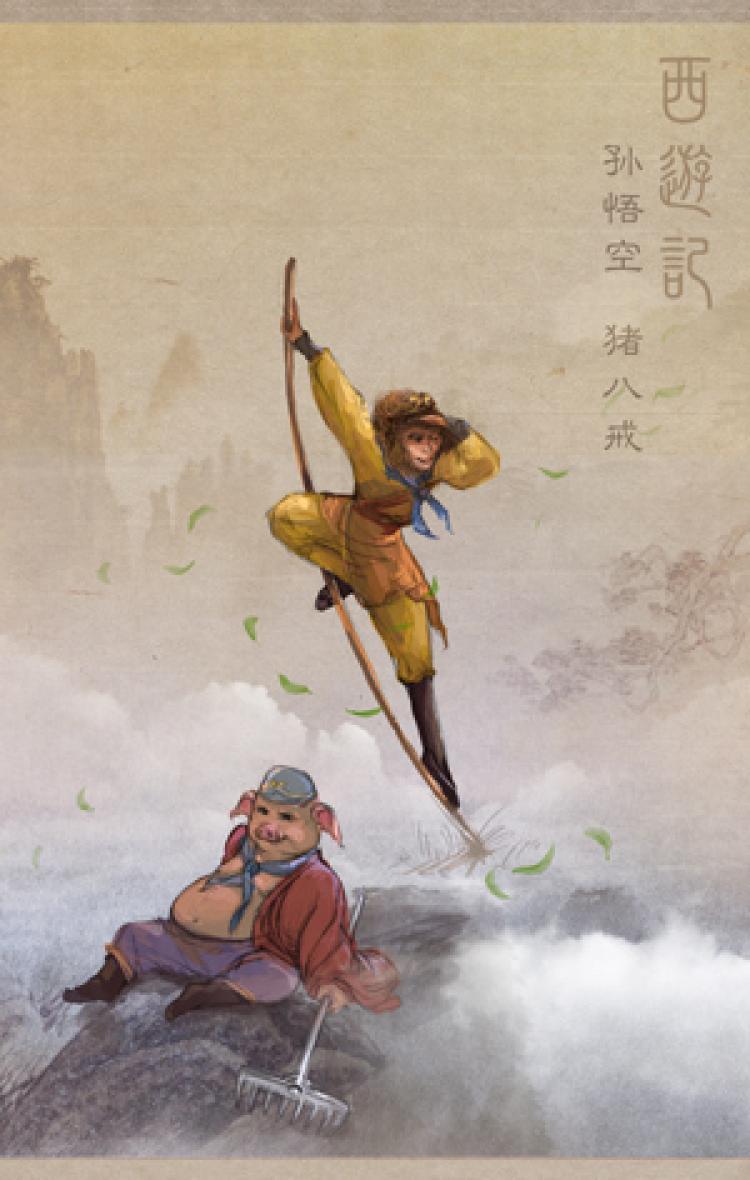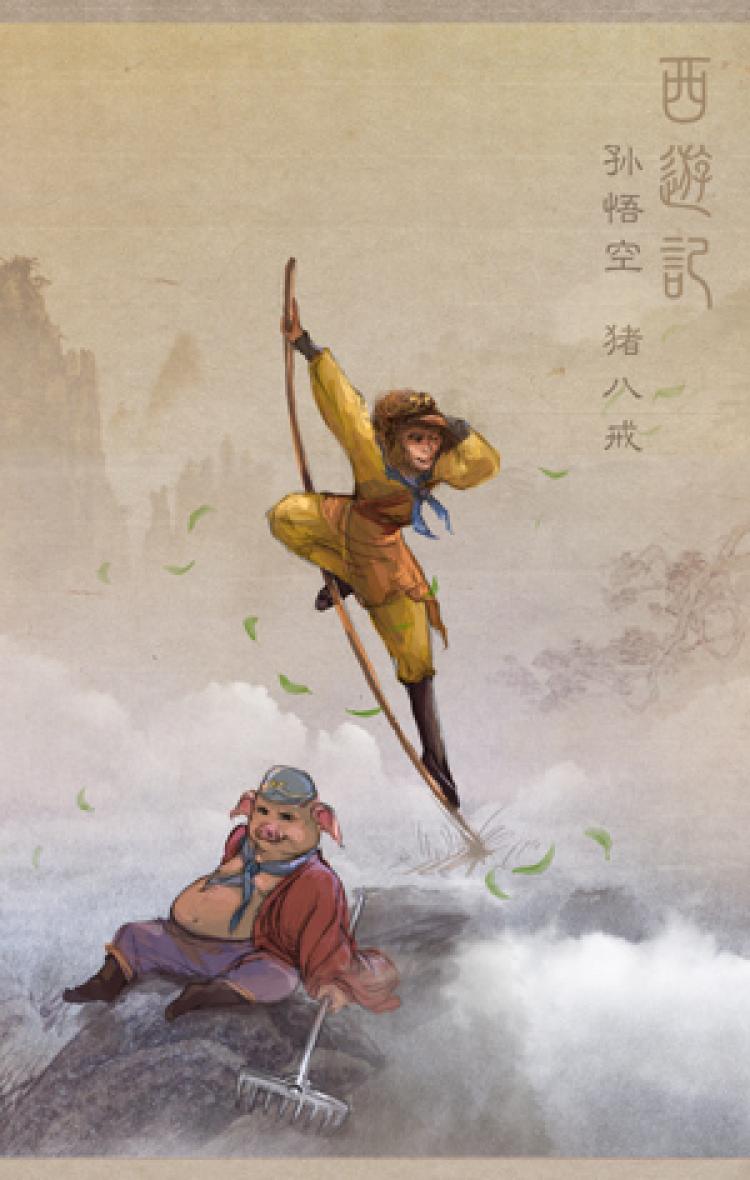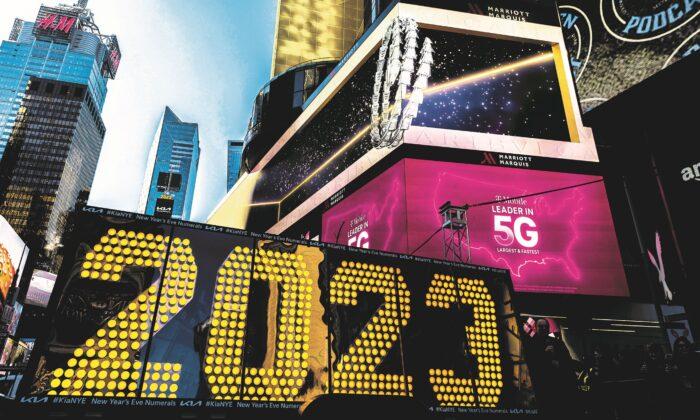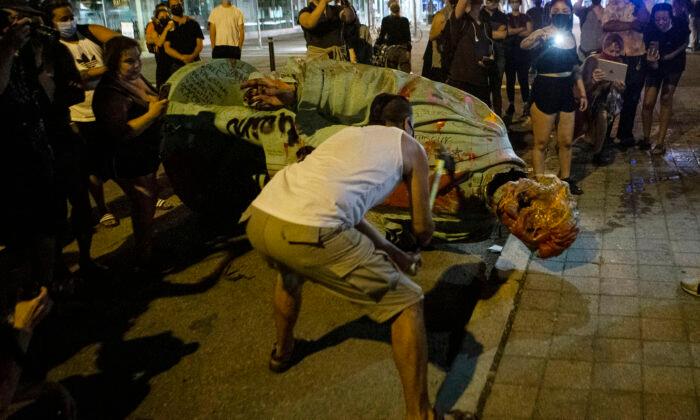All but lost in the East, the essence of an age-old culture rises in the West. This is Part 5 of a nine-part series that explores traditional Chinese culture to reveal a deeper understanding of the genius of the New York-based classical Chinese dance company Shen Yun Performing Arts.
Shen Yun Breathes Life Into China’s Historic Characters and Tales
Over the past 5,000 years, China amassed a diverse legacy of heroes, characters, myths, and legends, and this rich treasure trove is what Shen Yun Performing Arts draws inspiration from.
The New York-based performing arts company takes these timeless tales of ancient China and presents them to audiences through the medium of classical Chinese dance.
The great General Yue Fei, the Monkey King, Journey to the West, the Yellow Emperor, the Terracotta Warriors—Shen Yun has done them all.
But it’s not just that these are entertaining stories—it’s the ethics and upright traditions embodied by the characters that Shen Yun also aims to portray. In ancient China, adhering to values such as honor, loyalty, selflessness, striving for excellence, tolerance, and filial piety (respect for parents) was a way of life.
For instance, Hua Mulan, who is believed to have lived sometime during the Northern and Southern dynasties (A.D. 386–589), disguised herself as a man and went to war in place of her father because she feared he wouldn’t survive the ordeal.
She fought beside her male counterparts for 12 years, and nobody guessed her secret. After the war ended, the emperor bestowed honors on Mulan and wished to make her a high-ranking official but she declined, preferring to return home to care for her aging parents.
The legend of Mulan inspired the Shen Yun dance Mulan Joins the Battle.
Shen Yun has also told the tale of Wu Song, a famous character from the classic novel Outlaws of the Marsh, who saved a village from a marauding tiger even though he'd had a bit too much to drink that day.
Another Shen Yun favorite is the story of Li Bai (A.D. 701–762), arguably the greatest Chinese poet of all time.
Known as the “Poet Transcendent,” Li Bai’s work was the epitome of classic Tang Dynasty poetry. Li Bai was a wandering spirit, and his travels across China led him into the company of Daoists, literary men, and high officials, all of whom admired him greatly. He left behind 20 volumes of writing and some 900 poems.
Le Zun’s Vision
Shen Yun’s piece A Dunhuang Dream is a dedication to the legacy of the Mogao Grottoes, also known as the “Thousand Buddha Caves,” home to one of the most outstanding collections of Buddhist paintings and statues in the world.
The story goes that in A.D. 366 during the Tang Dynasty, a Buddhist monk named Le Zun, who was making the long journey to the Western Paradise, stopped by Sanwei Mountain near Dunhuang to take a rest. There, he had a vision of a glorious golden Maitreya Buddha floating in the sky. A thousand more Buddhas appeared, surrounded by flying fairies playing heavenly music.
Le Zun had learned painting and sculpture, and he used his skills to recreate his vision and filled a cave with paintings and statues of the divine scene. Some years later, another monk had an identical vision at the same place, and he filled another cave with artwork depicting what he saw.
Mogao quickly became a pilgrimage site. Over the years, more than 500 caves were dug into Sanwei Mountain, many of them during the Tang Dynasty. Today, the caves hold some of the finest Tang Dynasty artworks, including a 98.4-foot statue of Maitreya Buddha, one of the tallest in the world.
Successfully portraying these legends from China’s rich history is no small task, and that’s where classical Chinese dance comes in.
Within Chinese dance lie China’s deep cultural traditions, which allow its movements to be richly expressive so that even the personalities and feelings of characters can be portrayed with clarity and accuracy.
Through dance, General Yue Fei displays his bravery and loyalty, Chen Xiang splits a mountain to rescue his mother, Monkey King and Pigsy escape another dicey situation, delicate Udumbara flowers bloom, and Terracotta Warriors awaken from the dust.
As Shen Yun readies for another world tour, continuing with its renaissance of traditional Chinese arts and culture, audiences can look forward to seeing more of China’s most interesting characters take center stage.
The Epoch Times is a proud sponsor of Shen Yun Performing Arts, which will perform an all-new 2012 program at Lincoln Center’s David H. Koch Theater January 11–15. To learn more about Shen Yun Performing Arts and Chinese culture, view a calendar of Shen Yun’s 2012 world tour, and for ticket information, please visit www.shenyunperformingarts.org.







